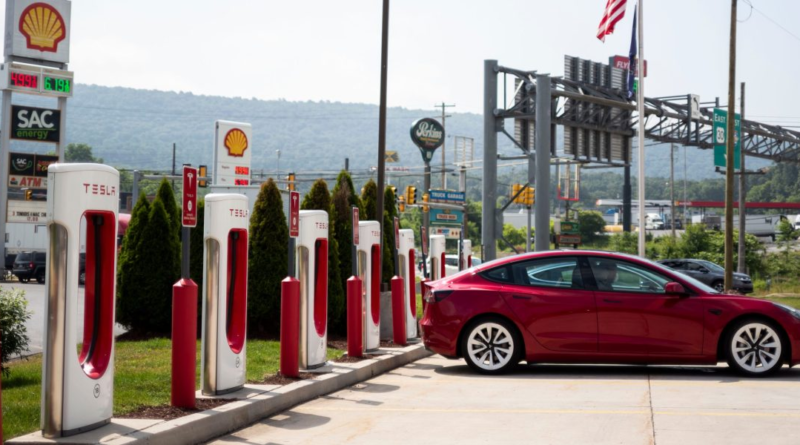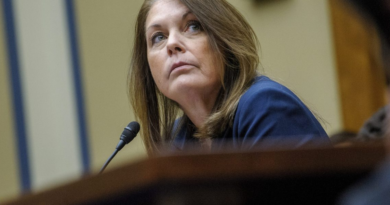EV charging stations are proving to be a profitable business, after all
When it comes to electric vehicle charging in the US, the cars are finally catching up to the cords.
Last year, the average utilization of a US fast-charging station not operated by Tesla Inc. doubled — from 9% in January to 18% in December, according to new data from Stable Auto Corp., a San Francisco startup that helps companies place EV infrastructure. Put another way: By the end of 2023, every fast-charging cord in the country was plugged in for an average of nearly five hours a day.
“There’s been a noticeable increase,” said Brendan Jones, chief executive officer of Blink Charging Co., which operates about 5,600 charging stations in the US. “We’re heading into 9% and 10% market penetration [for EVs]. Even if we stay at 8%, we’re still not going to have enough charging.”
Rising usage isn’t just an indicator of EV uptake — Stable Auto estimates that a charging station must be pumping electrons around 15% of the time to turn a profit. In that sense, the surging utilization numbers represent scads of stations climbing into the black for the first time, said Stable CEO Rohan Puri.
It’s “a threshold that truly makes my spirits soar,” Cathy Zoi, former CEO of EVgo Inc., said on an earnings call in September. “We believe the go-forward picture on network profitability is stronger than ever.” EVgo operates about 1,000 stations in the US; in September, almost one-third of them were humming at least 20% of the time.
EV charging has long been locked in a kind of chicken-and-egg standoff, particularly in the US, where vast swaths of interstate and a conservative approach to government subsidies have limited the pace of expansion. Charging networks struggled for years due to slow EV adoption, even as many drivers avoided EVs because of a dearth of charging options. That disconnect spurred the development of the National Electric Vehicle Formula Infrastructure program (NEVI), which is just starting to dole out $5 billion in federal funding to ensure a public, fast-charging station at least every 50 miles along the nation’s major travel corridors.
But even with little of that money distributed to date, America’s electric ecosystem is starting to reach parity between cords and cars. US drivers welcomed almost 1,100 new public, fast-charging stations in the second half of last year, a 16% increase, according to a Bloomberg Green analysis of federal data. By the end of 2023, there were almost 8,000 places to quickly top up an EV (28% of them exclusive to Tesla). Put another way: The US now has one quick-turn EV station for every 16 or so gas stations.
“There’s a widespread belief in the industry that fast charging is not a profitable business,” Puri said. “But what we’re seeing is for many stations that no longer holds true.”
EV-curious drivers
In a number of states, charger utilization rates are already well above the national average. Connecticut, Illinois and Nevada are among those states where fast-charging cords are now plugged in eight hours a day; at 26%, Illinois has the highest average rate of charger utilization in the country.
Critically, these stations grew far busier even as thousands of new fast-charging stations came online, meaning EV adoption is outpacing infrastructure gains. The increased uptime is more notable considering charging networks have long struggled to keep their equipment online and working properly.
There are diminishing returns, though. A charging station may not turn a profit until it’s in use about 15% of the time, but once utilization approaches 30%, the station is busy enough that drivers start to avoid it, according to Jones at Blink. “[When] you get to 30, you start worrying about whether you need another charger,” he said. “You start to get complaints.”
While the previous dearth of charging instilled a negative feedback loop on EV adoption, the opposite may be happening now. Charging networks, seeing their economics improve and in some cases backstopped by federal funding, will be emboldened to build more stations in more places. More charging stations, in turn, will tip more EV-curious drivers into battery-powered cars.
Stable Auto analyzes 75 different variables in determining whether a site would make a good home for a fast charger, chief among them how many other stations are nearby and how busy they are. Increasingly, its model is giving a green light. “Everyone should be seeing more attractive sites on our platform,” Rohan said.
Charging options will also increase this year as Tesla begins to open its network of Superchargers to vehicles made by other automakers. The company is responsible for slightly more than a quarter of all US fast-charging stations, though its sites tend to be larger, so roughly two-thirds of all cords in the US are geared for Tesla ports.




